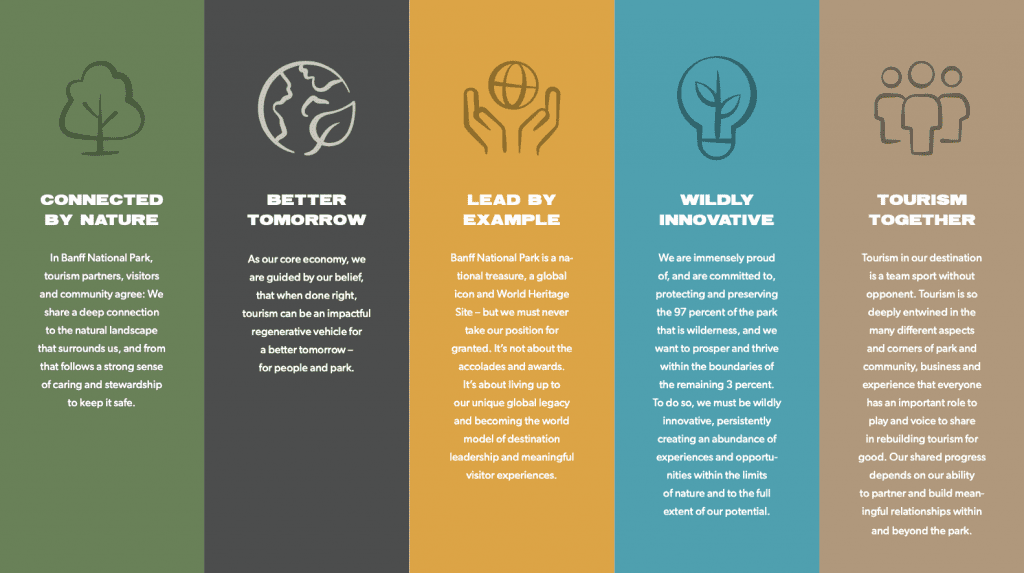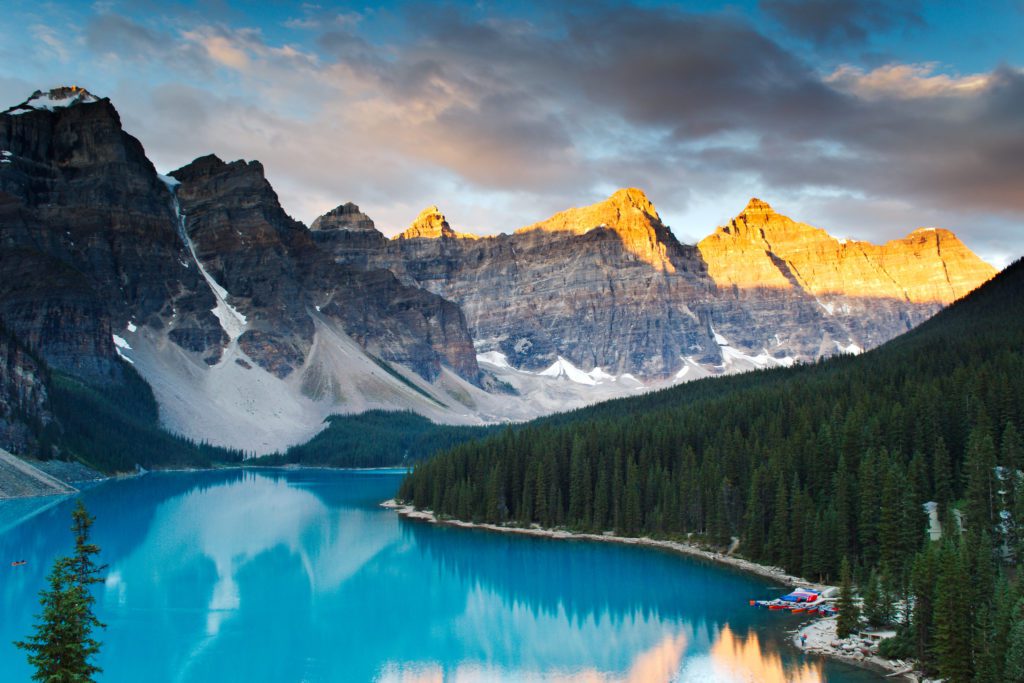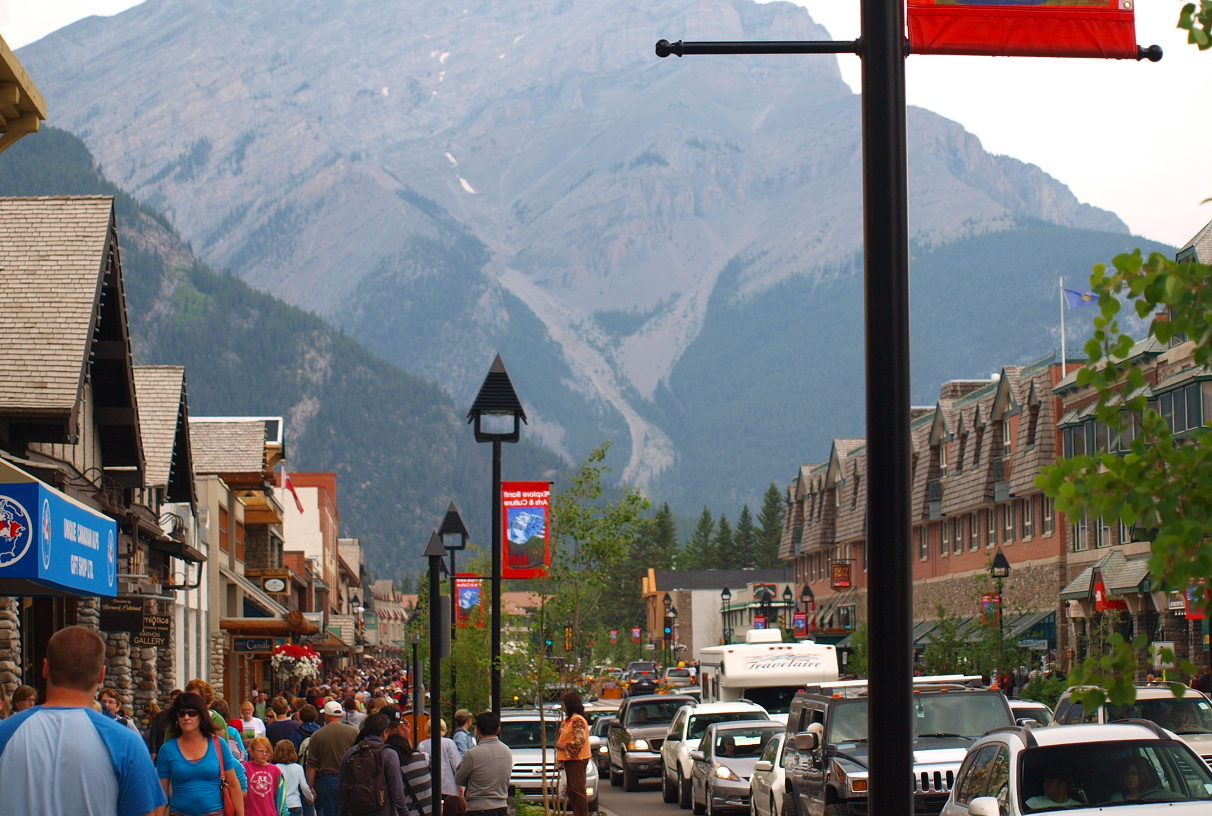Skift Take
Banff is cracking down on its "too-many-cars" problem. A 10-year plan identified core community values and strategies to inform a future vision for better stewardship. Another national park listens to its community. See where these new trails will lead.
Every year, the startlingly beautiful resort town of Banff in western Canada receives more than four million visitors. In July alone, Banff National Park saw a total of 694,127 independent visitors, the most it had seen for the month since 2013. Parks Canada, the government agency managing national parks, said traffic flaggers were required 24 hours a day in 2022 in response to demand for access to Moraine Lake. The parking lot also remained full for nearly 24 hours a day at the peak of summer.
“Even before the pandemic began, congestion has been increasingly impacting the ability of residents and visitors to access recreation features in the park,” said Laurie Edward, executive director of Banff Canmore Community Foundation, a non-governmental organization based in Bow Valley that has also been involved in drafting the decade-long vision. “Local people care about that for themselves and for the visitors they welcome here.”
Finally, Banff is addressing these problems of overtourism.
Banff is a town situated within the national park, where the community itself was developed to support park visitation. The community is heavily reliant on tourism, the only economy in the park.
Hoping to improve tourism for visitors, community members and the park, the “10 Year Plan for Tourism” “captures issues top of mind for Banff residents. The project is drafted by the Tourism Together Steering Committee, which is chaired by Banff & Lake Louise Tourism (BLLT), and also comprises representatives from the town of Banff and Parks Canada.
“I worked with the former mayor of Banff and the former superintendent of Banff National Park to conceive of this idea almost four years ago. So this has been a project that has been a long time in the making,” said Leslie Bruce, the president and CEO of BLLT.
An extensive process of community engagement and consultation informed the development of this tourism vision. Out of nearly 9,000 town residents, over 2,000 interested parties participated in the big conversation through surveys, working groups, one-on-one interviews and community meetings.
The enthusiasm and high engagement from community members generated more volume and interest than the BLLT initially anticipated. Around 92 percent of people cite being close to nature as their reason for choosing to live and work in the park, according to the report.
The “10 Year Vision” establishes five core principles shaped through the Tourism Together collaboration, representing the desires and commitments of the local community and not just the destination organization.

“The co-development aspect of this is really unique, and I hope will inspire others to do this,” said Bruce. Tourism Together focused on recognizing the alignment of common values and shared passions for turning the vision into action. “When we started, we thought we would write a plan, and that plan would have all sorts of tactics that would lend to the path,” she added, “what we realized through the plan was how important investing in the alignment was.”
A typical busy day in Banff sees around 9,500 unique inbound and outbound vehicles. Inbound vehicles are estimated to have an average occupancy of 2.4 people per vehicle, which leads to approximately 23,000 day visitors. Town of Banff officials say that the visitor-adjusted population can go up to 43,000 per day in the summer season.
Pressures from overtourism can be attributed to a mismatch between rapid tourism growth and areas supporting a more sustainable local community. Long-standing challenges around private vehicles and road congestion are now getting prioritized.
The plan has led to announcements in managing access to lakes through mass transit and reservation systems. Lake Moraine Road, which provided access to sunrise, sunset and nighttime photography in the past, will be closed to private vehicles starting this year.

There were no new sets of measures or metrics developed to be dedicated to tourism. Instead, the vision commits to the town’s goals of achieving carbon neutrality, reducing single-use plastics, or improving wastewater treatment. Ongoing carbon footprint studies on the individual business and transportation organization levels are also part of the implementation process.
“I think so many times these documents are aspirational. And then they’re finished and put on a shelf,” Bruce added. “I think what’s exciting about this is that we’re already working on this..and we want to make sure that anything that we were solving for the visitor was also being part of the solution for the resident.”
Issues affecting visitors and businesses are viewed as part of the ones facing the local community. There is a strong consensus between park management and the Banff town council to take action to protect local experiences, Edward added.
“There’s a lot of pride here. A lot of pride for the place that we get to call home, as well as pride for the efforts that we’ve all made to ensure that this place is here for future generations,” said BLLT’s Bruce. “It’s not the next generation is going to take care of this. We got to start now.”
The Daily Newsletter
Our daily coverage of the global travel industry. Written by editors and analysts from across Skift’s brands.
Have a confidential tip for Skift? Get in touch
Tags: banff, canada, national parks, nature, overtourism, tourism
Photo credit: Crowded street in Banff National Park over a long weeked. Source: Calgary Reviews / Flickr
